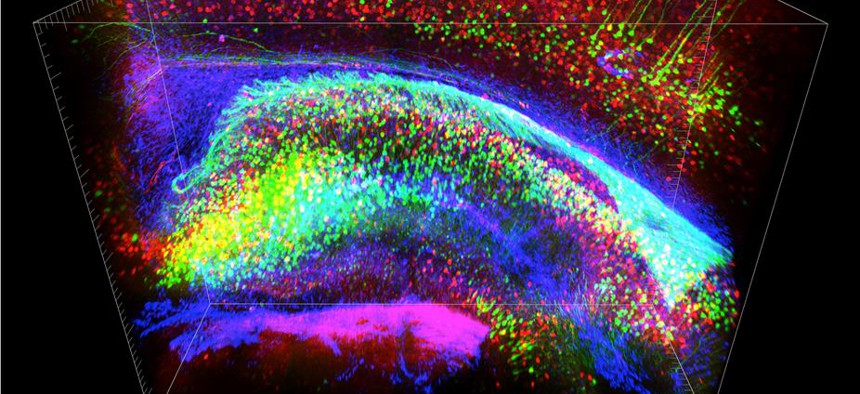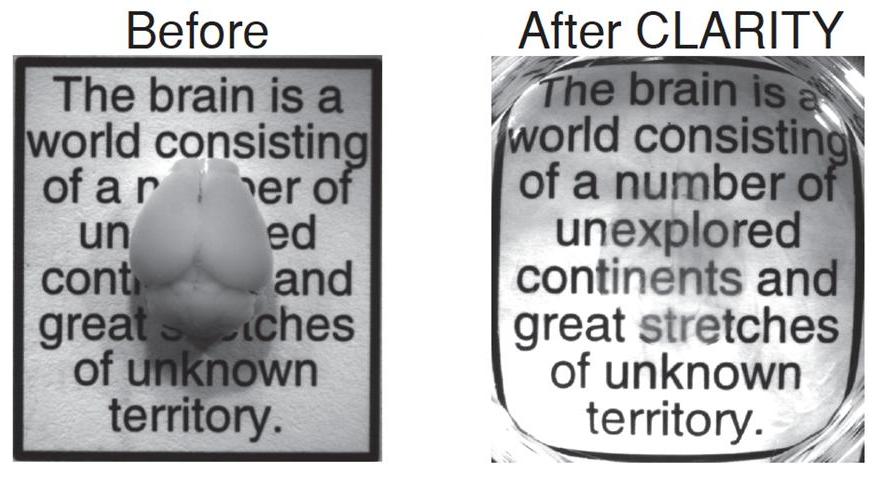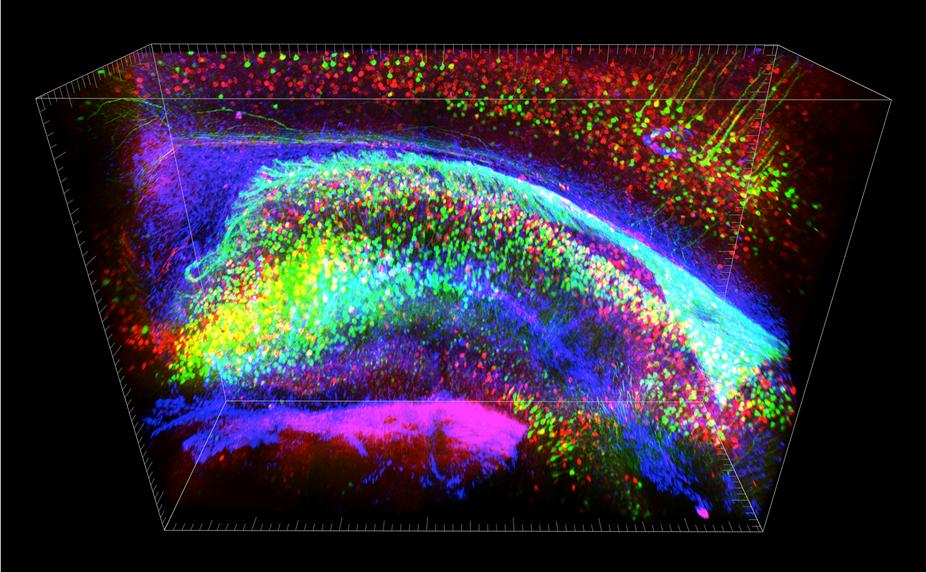
This is the hippocampus, a structure important for learning, memory, and emotion. Each color represents a different molecular label; this labeling can happen after the brain is CLARIFied but still fully intact. Kwanghun Chung and Karl Deisseroth, Howard Hughes Medical Institute/Stanford University
The Brain: Now You See It, Soon You Won’t
Inside the amazing, and beautiful, new technique allowing us to see inside the brain.
A post mortem brain is a white, fatty, opaque, three-pound mass. Traditionally scientists have looked inside it by cutting the brain into thin slices, but the relationships and connections of the tens of billions of neurons are then almost impossible to reconstruct. What if we could strip away the fat and study the details of the wiring and the location of specific proteins, in three dimensions? An NIH funded team at Stanford University has done just that, developing a breakthrough method for unmasking the brain.
Using a chemical cocktail, they infuse the brain with a hydrogel that locks in the brain’s form and structure in a type of matrix. Then the fatty layer that coats each nerve cell is stripped away, leaving a transparent brain (check out the transparent mouse brain below). The hydrogel prevents the brain from disintegrating into a puddle once the fat is gone.

CLARITY transforms a mouse brain at left into a transparent but still intact brain at right. Shown superimposed over a quote from the great Spanish neuroanatomist Ramon y Cajal.
The new technique, cleverly but mind-bendingly named Clear Lipid-exchanged Anatomically Rigid Imaging/immunostaining-compatible Tissue Hydrogel─or CLARITY─will undoubtedly advance the BRAIN Initiative that President Obama announced just last week at the White House . In fact, Karl Deisseroth, leader of the CLARITY project, was in the East Room that morning, and has been chosen as a member of the NIH BRAIN working group.
Using CLARITY, the authors follow an individual neuron as its snakes through the brain of an autistic individual. They’ve stained the transparent brain in multicolored fluorescent hues to highlight the activity of individual genes, cells, neurotransmitters, and proteins.

This is the hippocampus, a structure important for learning, memory, and emotion. Each color represents a different molecular label; this labeling can happen after the brain is CLARIFied but still fully intact.
In another extraordinary technical feat, they’ve imaged the transparent mouse brain with a light microscope, revealing a forest of neurons that glow like bioluminescent trees (below).

CLARITY is powerful. It will enable researchers to study neurological diseases and disorders, focusing on diseased or damaged structures without losing a global perspective. That’s something we’ve never before been able to do in three dimensions.
Video: take a fantastic voyage through a mouse brain
Reference: Structural and molecular interrogation of intact biological systems. Kwanghun Chung, Jenelle Wallace, Sung-Yon Kim, Sandhiya Kalyanasundaram, Aaron S. Andalman, Thomas J. Davidson, Julie J. Mirzabekov, Kelly A. Zalocusky, Joanna Mattis, Aleksandra K. Denisin, Sally Pak, Hannah Bernstein, Charu Ramakrishnan, Logan Grosenick, Viviana Gradinaru & Karl Deisseroth. Nature. Published online 10 April 2013
For more information: NIH BRAIN Initiative
NEXT STORY: Ten Years Later, a Marathon Runner



